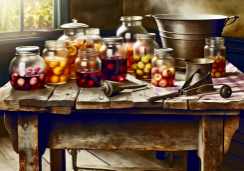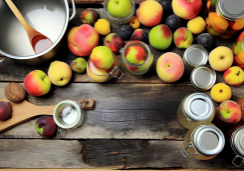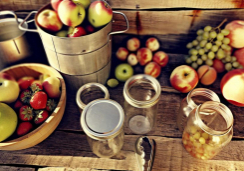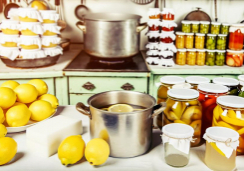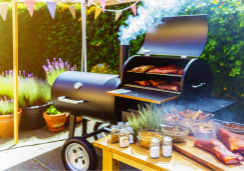Beginner's Guide to Home Smoking Techniques
As you stand in your backyard, you might feel like a medieval alchemist, ready to transform the most basic of ingredients into a feast fit for royalty, yet the art of home smoking is far less mystic and far more accessible than it once was.
You've got the passion to create mouth-watering smoked dishes, but knowing where to start can be as elusive as smoke itself. Let's lay out the essentials: from choosing a smoker that won't lead you astray, to understanding the subtleties of wood chips that will best complement your meats.
You'll learn how to prepare your cuts with the right brines and rubs, and how to master the slow dance of heat and smoke. However, there's more to smoking than just setting and forgetting; it's an adventure in patience and precision that promises rich rewards for your taste buds.
Stick with me, and you'll uncover the secrets to elevating your home smoking game from the realm of the ordinary to the extraordinary.
Choosing Your Smoker
When you're firing up your smoking hobby, a simple kettle grill can serve as your gateway to mastering the art of meat smoking. You don't need a fancy, high-end smoker to start; a classic Weber kettle will do just fine. It's all about technique, and a kettle grill offers the perfect training ground.
You'll learn how to manage your fire, maintain a steady temperature, and create that irresistible smoky flavor.
Experiment with various wood chips or wood chunks to infuse your meats with different aromas. Apple, hickory, and mesquite are great starters, each imparting a unique essence to your culinary creations. The key is to soak your chips or chunks and let them smolder over the charcoal, giving your food a gentle kiss of indirect heat and smoke.
Understanding Smoke and Heat
Having grasped the basics of choosing your smoker and the wood to flavor your meats, it's crucial to understand how smoke and heat interact to perfect your smoking technique. Different woods impart unique tastes and smoke densities, so your choice directly influences the flavor of your smoked meats. It's not just about the wood, but how you manage it over time to smoke food with finesse.
To keep your smoker at the right temperature, you'll need to master the vents. They're your best tool for controlling airflow, which in turn, regulates heat and smoke. Remember, consistent airflow means constant temperature, and that's the sweet spot for smoking meat.
But it's not a set-and-forget affair. You'll need to keep an eye on the internal temperature of your meat and the smoker. If the heat soars or dips, adjust the airflow, add or remove hot coals, and keep that temperature steady. Placement of the meat is another variable—experimenting with proximity to the heat source can bring you closer to that ideal tenderness and flavor profile.
Preparing Your Meats
To ensure your smoked meats are succulent and rich in flavor, start by thoroughly defrosting them a day or two before smoking, giving the heat and smoke the chance to evenly penetrate the cuts. The first step to prepare your meats is crucial; you don't want to rush this process. Once defrosted, pat the meat dry to remove any excess moisture—this helps the smoke to adhere better, resulting in a tastier smoked meat.
Before you're ready to smoke, make sure to:
- Coat your meat with a dry rub to develop a flavorful crust that'll make your mouth water.
- Select beginner-friendly meats like pork butt, chicken thighs, or ribs for a more forgiving smoking experience.
- Avoid brining at this stage to prevent over-salting, especially if you're new to smoking food.
Using charcoal as your heat source can impart a distinct flavor, but remember to remove the meat from direct heat. Smoking is about gentle, indirect cooking that infuses the meat with smokiness. Experiment with different woods to find the taste you love, and don't be afraid to try various combinations of meats and rubs.
Your journey into the world of home-smoked foods is just beginning, and there's so much deliciousness to explore!
Mastering the Smoking Process
Embarking on the smoking journey, you'll find that mastering the heat and smoke levels is key to transforming good meat into an exceptional feast. As a first-timer, following a Beginners Guide to Smoking is like having a treasure map; it leads you to the succulent rewards of patience and precision.
The basic steps begin with making sure you maintain a consistent temperature. It's an important part of the process, akin to setting the stage for your meat's flavor profile. You'll want to start with a small fire, one that's easier to control. This isn't a race; smoking is a craft that demands a long time and a gentle touch.
Think of the smoke as a spice, enveloping your meat in layers of complex aromas. Too much heat, and you risk overcooking; too little, and the meat won't absorb those delectable flavors. Keep a watchful eye on your smoker, adjusting vents as needed to regulate airflow. It's this dance between oxygen and fuel that keeps your fire burning just right.
Selecting Woods and Flavors
When selecting woods for smoking, your choice can make or break the flavor profile of your meat, turning an ordinary barbecue into an extraordinary culinary experience. To ensure you're on the right track, let's dive into the woodsy world of smoky flavors.
- Hickory provides that classic barbecue taste, perfect for any cut of meat you're going to put on the grill.
- Apple and cherry woods offer a fruity essence that complements pork beautifully, adding a little bit of sweetness to the food.
- Mesquite, with its bold flavor, is ideal for beef, ensuring your meat for the first time smoke has that authentic, smoky edge.
First off, you'll want to match the wood to your meat. Hickory logs are your go-to for a long-lasting smoke that's sure to please any barbecue enthusiast. For something a little lighter, fruit woods like cherry and apple yield a clean, sweet-smelling smoke that won't overpower your food. While mesquite's intense flavor can be amazing, avoid getting too heavy-handed, especially if it's your meat for the first smoke.
You'll find a variety of smoking woods at your local hardware store or grilling equipment shop. Experimenting with different flavors can be part of the fun. Just remember to keep one side of the grill for your meats and the other for your chosen wood chips, ensuring an even, delicious smoke infusion.
Frequently Asked Questions
What's the Easiest Thing to Smoke for Beginners?
You'll find pork shoulder forgiving, perfect for practicing temperature control and wood selection. Start by learning brine basics and marinating tips to enhance flavor profiles before mastering smoke rings and charcoal management.
How Do You Start a Smoker for Beginners?
You'll start your smoker by choosing wood for flavor, preparing the grill, and following ignition tips. Control temperature, adjust vents for smoke flow, maintain the fire, select the right fuel, and plan clean-up procedures.
What Is the Best Smoke Technique?
You'll want to master temperature control and wood selection to create perfect smoke rings. Balance smoke density and indirect heat, manage ventilation, and experiment with meat brining for rich smoke flavoring. Cold smoking is an art.
How to Smoke Meat for Dummies?
You'll master smoking meat by selecting the right cuts, perfecting brine basics, applying rub recipes, controlling temperature, choosing wood for smoke flavor, marinating methods, aiming for smoke rings, and honoring the resting period.
Conclusion
Now you're set to smoke like a pro! You've got the gear, know-how on heat, and your meats are primed.
With each wood chip's unique zest, your dishes will sing smoky tunes. Embrace the slow burn, refine your technique, and watch friends marvel at your newfound mastery.
Happy smoking—may your backyard bask in the aromas of success!




